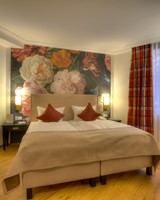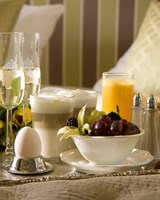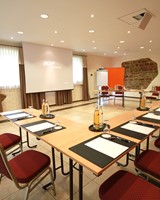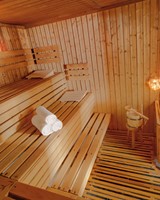The whole story
1792: Acquisition of the estates
The area now known as Nells Park was bought by Nikolaus von Nell, Canon of the Basilica of St. Paulinus, in 1792 from the Teutonic Order. It was 8 hectare of moorland and wasteland, largely marshy and therefore worthless. Von Nell did not let this deter him: he dug trenches to channel the water and formed islands and ponds. After the drainage of the land he had local gardener Gotthard plant rare trees on the terrain and began building greenhouses and farm buildings - all in the classic English-Dutch style. Von Nells' performance is all the more remarkable because it happened at a time when revolutionary troops were marching in Trier, the Goddess of Reason was placed on the altar in the Jesuit church, and Trier Cathedral was being used as a stable. The conversion of the site was not a private pleasure; von Nell's construction work provided many people with work and income over the years.
1801: Completion of the park
Von Nell only survived the completion of his park in 1801 by 6 years. We owe the authentic and detailed description of the sights to Parisian state archivist Armand Gaston Camus, who visited the province annexed by France, and highly praised both the beauty of the park and its creator von Nell for his passion for gardening. According to legend Napoleon visited the park and had a dinner service from France sent to gardener Gotthard in recognition of the landscape's architectural achievement.
1851: Construction of the classicistic mansion
In 1851, the old, classicist-style mansion was built; the neglected southern front of which had to be demolished in 1940. Among other things, the stable with its Gothic windows and the Gothic portal made of demolition material have been preserved.
1940: Acquisition of the park by the city of Trier
The city of Trier acquired the park in 1940. Even during the war, the parks department managed to expand the park and the water areas. This was possible because large amounts of water were required in case of fire in the nearby provisions office behind the Metternichstraße railway track (what is now barracks). In this way business and pleasure could be mixed.
1946: Lambert’s dahlia cultivation
From 1946 to 1954, Lambert and Sons relocated their dahlias to Nells Park, so that visitors could enjoy a wonderful dahlia bloom, making it popular destination in those years. Not only the abundance of dahlias but also boat rides attracted many visitors every Sunday.
1958: Creation of the rose garden
Horticulture Day 1958 provided many suggestions for expansion of the park. Among other things, the idea of a state garden show was born (with the expansion of the green areas to the Moselle), which ultimately failed due to the costs, but the city council decided to create a rose garden in Nells Park.
The park experienced even more life from 1960 through the activities of the Trier Riding and Driving Association and from 1970 due to the annual Trier Flower Days.
1981: Expansion of the rose garden
The rose garden was created in its current form in 1981. More than 3000 cubic meters of loamy soils particularly suitable for roses were delivered from construction pits on the Tarforst plateau. Small mounds and slopes were modelled using the soil. It was creatively possible to integrate the rose garden into the park, to continue the romantic English park landscape while redesigning the northern end of the park. The rose garden's own charm stems from this union. Around 500 varieties of roses can be admired on 9,000 square meters of space on winding paths, including unique so-called living museum specimens.
1989: Renovation of the buildings by the Kraft family
In 1985 the Kraft family purchased the buildings. Following the plans of architect Schmitz, the mansion was converted into a hotel. An exemplary integration of the new building into the park was achieved by coordination and cooperation between building owner and parks department.
1999: Renovation of the historical orangery
The historical orangery has had many functions in its 200 year history. It once served as a stable; from 1960 it was used as a riding hall and from 1970 as an exhibition space for the Trier Flower Days. Until 1998, frost-sensitive tub plants and palm trees from the city of Trier were stored here in winter. From 1999 the Nells Park Hotel leased the orangery and has partially renovated it for events. In 2005 the Kraft family took possession of the orangery from the city and developed a pioneering building concept for conferences, events and wellness which was put into practice in 2007. Since then, the orangery has become one of the most popular venues far beyond the region - from congresses to weddings.















